How to make the soles of winter shoes non-slip?
There are special requirements for winter boots and boots: the main thing is that the shoes do not slip, otherwise a walk on icy sidewalks can result in serious trouble. There are several methods and devices to increase the grip of the sole on the icy surface and prevent your feet from moving apart.
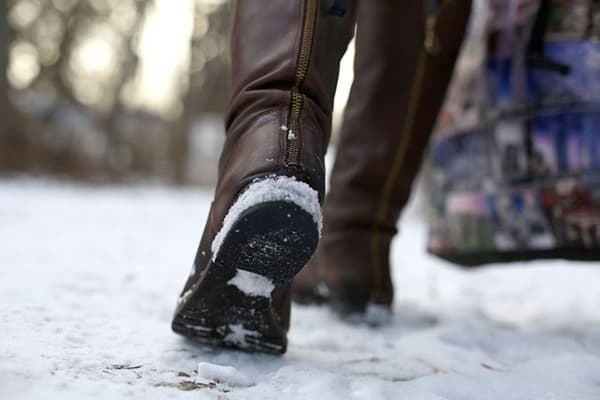
What shoes don't slip?
In the winter season, especially at the beginning and end of the season, the weather is very changeable. Night frosts give way to daytime thaws, causing roads and sidewalks to become covered with a thin layer of ice. Therefore, when choosing shoes for winter walks, you need to pay attention not so much to the appearance of the model, but to comfort and stability on slippery surfaces.
To prevent shoes from slipping, they must meet the following requirements:
- The sole is made of a material that provides good grip on the road. It can be regular or thermoplastic rubber, rubber.
- The tread has grooves that are not too deep, but randomly located. The more disorder there is in the pattern, the stronger the adhesion.
- It is better to give preference to models with solid soles or low wide heels.
- The height of the platform is no more than 5 cm.
It’s bad when, when walking, the heel leans back and the toe of the boot rises more than 1 cm.
When buying a new pair of boots, you should also check in the store that the soles do not slip.It is better to take shoes made in countries where they know first-hand what winter and ice are like. These are, for example, Russia, Finland, Norway, Germany.
Which sole is the most non-slip?
Shoe soles are made from various natural and synthetic materials, but for winter models, regular or thermoplastic rubber is most suitable.
- The rubber outsole is durable and can withstand temperature changes well. Flexible elastic material provides a tenacious connection with the icy surface, so walking in boots with a rubber platform is quite safe in winter.
- Thermoplastic rubber (TPR) combines the properties of vulcanized rubber and thermoplastics. Strength and elasticity are the main advantages of this material. Shoes with such a sole are light and comfortable, and do not slip at all on ice. TPE retains its properties when temperatures drop to -45°C.
You should not choose winter boots with a platform made of tunit, genuine leather or polyurethane. These materials harden in the cold and become incredibly slippery.
Why does the sole slip?
A sole made of a porous material, such as polyurethane, when exposed to frost, loses flexibility and ductility. Micropores, located in large numbers on its surface, close. The platform becomes completely smooth and the shoes begin to slide.
Boots with “semolina”, as polyurethane is often called popularly, are suitable for those who spend no more than half an hour in the cold and move mainly in a car. Polyurethane is not suitable for everyday winter shoes, since at temperatures below -20°C it begins to break and crumble, and the sole slips a lot.
How to rub the sole for stability on ice?
If your shoes slip a lot, and you absolutely don’t want to change your fashionable boots, you can use folk remedies and try to cope with the problem yourself.
What to do with a sliding sole to maintain a respectable appearance and increase your stability on an icy path?
- Superglue mesh. The sole of the shoe is degreased with alcohol or solvent, after which the entire surface is painted with glue. To enhance the effect, the glue can be applied one more time, allowing the first layer to dry. Then the shoe is placed on the sand and pressed firmly so that the grains stick into the glue. The homemade protector is ready. The main thing is not to walk around the apartment in such shoes, so as not to spoil the floors.
- Silicone glue. The lower part of the platform must be sanded with coarse sandpaper and then coated with silicone glue. The procedure is repeated twice, then the boots are dried until the glue has completely hardened (about 2 days).
- Nylon stocking. If you set fire to old knee socks or nylon tights, they will melt. As a result, a viscous sticky substance is formed, which is applied in drops to the sole.
- Volumetric push-up paints. Paints for creating three-dimensional drawings from children's art kits will help cope with the “slippery” problem. You just need to smear the sole and let the paints dry. The resulting loose pattern will prevent slipping in icy conditions.
Desperate owners of slippery shoes come up with the most incredible methods, trying to make the sole more stable. For example, they say that you can rub the surface of the platform with a grater or scrape it with a knife. Perhaps it’s just a pity to spoil the boots. Another dubious method is to spread cut potatoes on the sole.The starch will settle and make the shoes less slippery for a few minutes.
What should I glue to my boots to prevent them from slipping?
Pieces of flannel, plaster or sandpaper glued to the bottom of the platform will help reduce slipping.
In order for the homemade protector to last longer, the shoes must be thoroughly washed and dried before starting work. Particular attention is paid to the back and nose parts, onto which pieces of felt or adhesive plaster are glued, placing the strips in different directions. To preserve the appearance of the shoes, the white patch can be painted over with a black felt-tip pen.
This method is simple and accessible, but short-lived. After a maximum of two days, the strips will fly apart and the work will have to be done again.
Those who do not believe in folk remedies and are looking for more thorough methods should contact any repair shop and glue a rubber anti-slip pad to the sole. Moreover, here you can choose both the thickness of the sticker and the tread pattern. The shoes will not only stop slipping, but will also become warmer.
Device for winter shoes
Pharmacies or hardware stores sell special devices that increase traction and reliably protect a person from falling in any icy conditions. These are rubber products with metal inserts in the heel and toe area.
Ice pads are put on boots immediately before leaving the house, since it is impossible to move around the apartment in such pads. The product looks quite aesthetically pleasing. Some models can even be adapted to elegant women's high-heeled ankle boots.
Ice access is the most effective and reliable way to protect yourself on an icy surface.
You should not risk your health by putting up with slippery shoes during icy conditions. There are many ways to avoid this problem. And if you don’t want to spoil the appearance of your new boots or shoes whose soles are not stable enough, it’s better to buy ice shoes or take a pair to a repair shop, where a technician will carefully glue on a suitable tread.
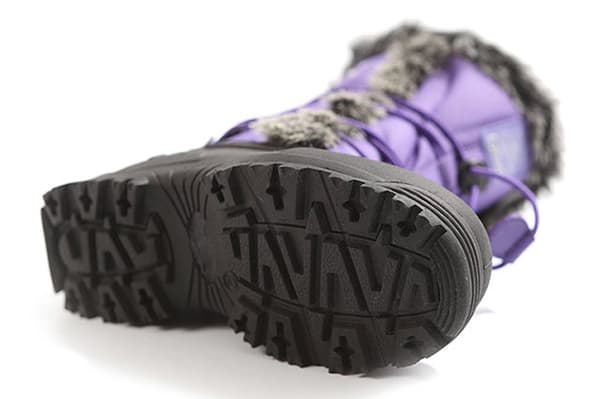
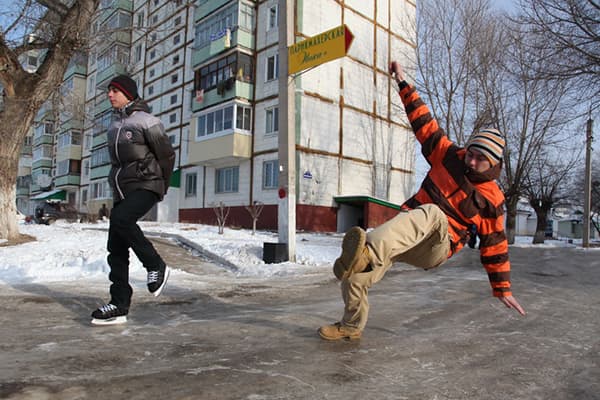

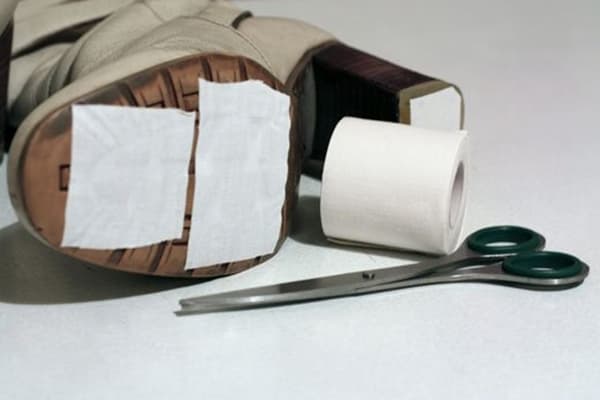
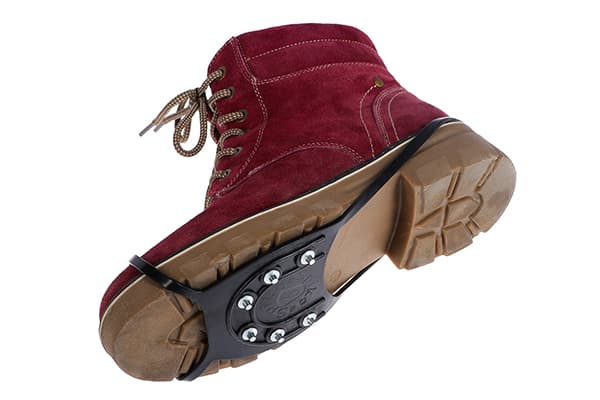
as an option, stud it (if the sole allows it) at a tire shop... a friend recently did it until he tested it too much
And even better are the tracks from an all-terrain vehicle.
Apply drops of hot glue (hot glue gun) all over the sole
In the 70s there were no specials. devices, but there were platform shoes, including winter ones. I studied evening classes at the Polytechnic. There, between the university buildings, the snow was never cleared, the students compacted everything anyway) the diaries rolled them down so much that they had to screw small screws into the heels - it helped.
When purchasing, you need to run the sole over your palm. If it glides well, it’s better not to take it...
I just screwed in a few small screws. Just last winter......!
I’ve been using ice access for about 5 years now. I’m happy with it. I recommend it to everyone.